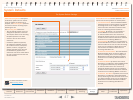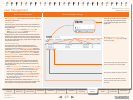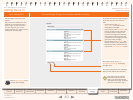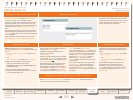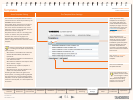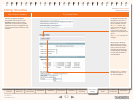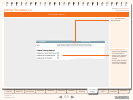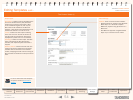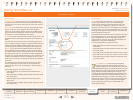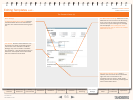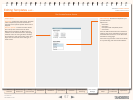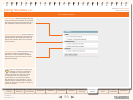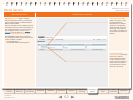
55
D13898.05
DECEMBER 2007
TANDBERG CONTENT SERVER
ADMINISTRATOR GUIDE
Table of
Contents
Disclaimers,
Patents etc.
Safety,
Environmental
Introduction Installation Quick Setup Operation
Backup and
Restoring
Administrator
Settings
Conference
Setup
View
Conferences
Appendices
Editing Templates cont...
Movie Settings
Large. If your users have access to a high-speed LAN,
choose ‘Large’. Beware, the bit rate for streaming the
conference will depend on the bandwidth of the call, and
can be as high as 1.76Mbps for a 1920k call. Users on
broadband connections which cannot support this streaming
bit rate will get a very poor streaming experience, with video
buffering, stopping and starting (stuttering). This format also
takes the longest to transcode.
The resolution of the recorded video will depend on the video
format negotiated for the call as well as the call bandwidth,
apart from QCIF calls, which will always get a 160 × 120
pixels resolution, CIF calls, which get 352 × 264 pixels and
w288p calls, which get 512 × 288 pixels.
In the Switching layout, the resolution will be:
480 × 360 pixels for 2.5CIF and 4CIF calls made at or
•
below 768k;
640 × 360 pixels for w448p, w576p and 720p calls made
•
at or below 768k;
576 × 448 pixels for 2.5CIF calls made at or above 1152k;
•
576 × 448 pixels for 2.5CIF calls made at or above 1152k;
•
768 × 448 pixels for w448p, w576p and 720p calls made
•
at or above 1152k.
Movie Settings
Conference Sizes. You can select up to two conference sizes.
Your selection of conference sizes in the Template Editor should
be based on the end-user’s streaming environment and Internet
connection.
Audio-only. If your users have a very poor quality Internet access,
choose ‘Audio-only’. The average bit rate for streaming the
conference will be around 35 kbps. Audio from the Main source
will be recorded and played back, and if Dual Video is activated
during the call, it will be displayed as still images.
Small. If your users have 64k modem access, choose ‘Small’. The
average bit rate for streaming the conference will be around 51
kbps.
The resolution of the recorded video in the Switching layout will
be up to 160x120 pixels (for QCIF, CIF, 2.5CIF and 4CIF calls) and
212x120 pixels (for w288p, w448p, w576p, 720p). In the Two
Videos layout, Dual Video will be displayed as still images only.
Medium. If your users have broadband access to the Internet
(around 500kbps), choose ‘Medium’. The bit rate for streaming
the conference will depend on the bandwidth of the call, but will
be capped at 471 kbps. So, for example, a 128k call bandwidth
will result in a 117kbps streaming bit rate for your conference, and
a 384k call bandwidth will result in a 353kbps bit rate. All calls
512K and over will result in a 471kbps bit rate for your streaming
conference.
The resolution of the recorded video will depend on the video
format negotiated for the call as well as the call bandwidth,
apart from QCIF calls, which will always get a 160 × 120 pixels
resolution.
In the Switching layout, the resolution will be:
240 × 180 pixels for CIF, 2.5CIF and 4CIF calls made at or
•
below 384k;
320 × 180 pixels for w288p, w448p, w576p, 720p calls made
•
at or below 384k;
320 × 240 pixels for CIF, 2.5CIF and 4CIF calls made at or
•
above 512k;
424 × 240 pixels for w288p, w448p, w576p, 720p calls made
•
at or above 512k.
The Content Viewer (II)
Large and Medium sizes have been designed to
provide the optimum viewing experience based on
adaptive algorithms which are dependent on the video
format negotiated during the call and the bandwidth of the call.
Higher quality inputs with a large amount of data will result in
a high resolution and high streaming bit rate outputs—e.g.
a Large size Windows Media Switching layout template used
in a w576p call made at a bandwidth of 1920k will result in a
768 × 448 video streaming at a bit rate of 1.76 Mbps. Lower
quality inputs with less data will result in lower resolution and
lower bit rate outputs—e.g. the same Large size template
used in a 384k 4CIF call will result in a 480 × 360 video
streaming at 353 kbps.



